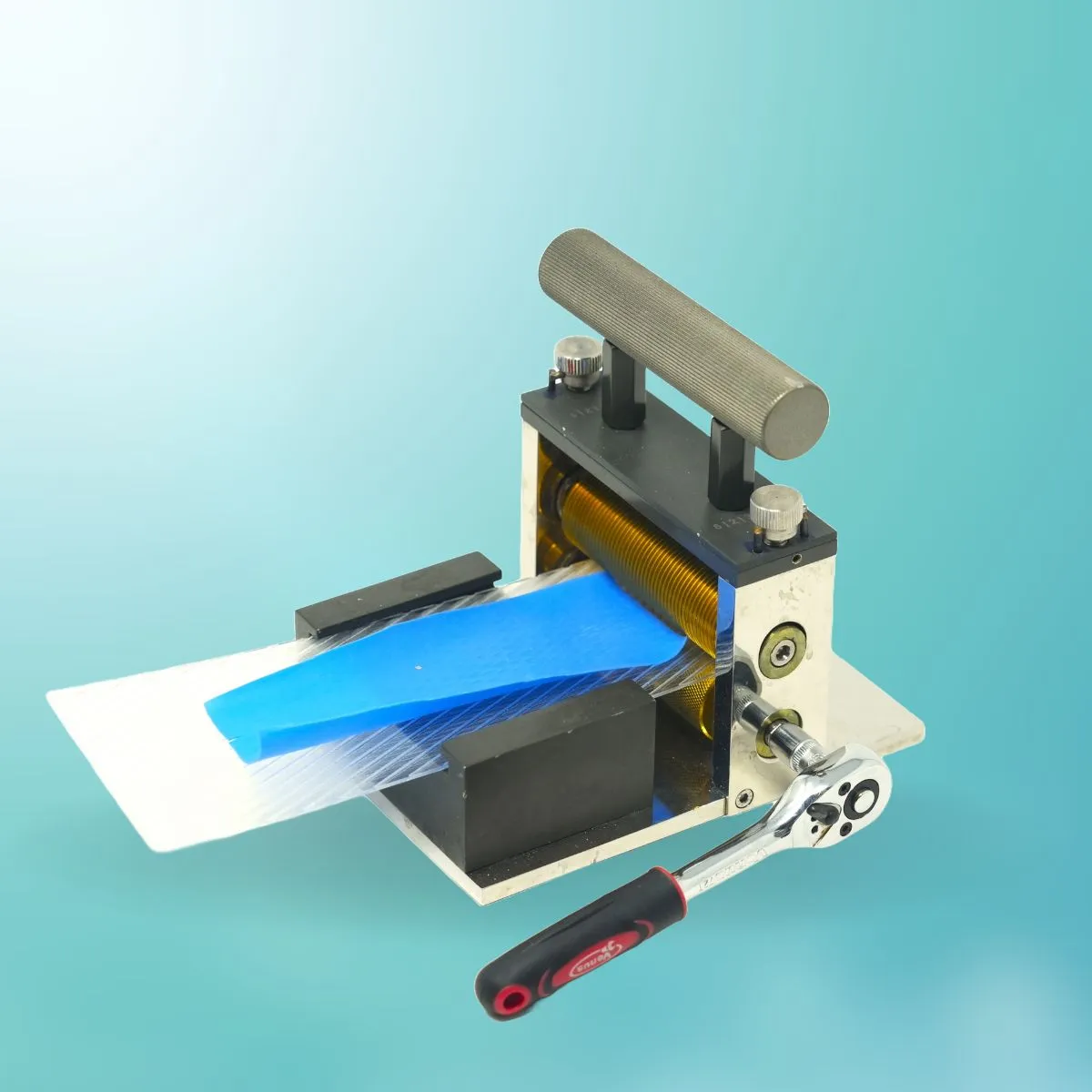SKIN MESHER
Description
Skin Mesher in Plastic Surgery – Detailed Description
A skin mesher is a specialized surgical device used in plastic and reconstructive surgery to expand skin grafts by creating a uniform pattern of slits. This expansion allows the graft to cover a larger surface area, promoting better wound healing and improving graft survival. Skin meshers are commonly used in procedures involving burn treatment, trauma repair, and reconstructive surgeries.
Structure and Design
The skin mesher is designed for precision and ease of use, featuring:
- Roller System: Equipped with a rotating drum or roller with sharp blades that create evenly spaced slits in the skin graft.
- Carrier Plates: Specially designed mesh plates (commonly made of plastic or metal) that guide the skin through the roller to ensure uniform expansion.
- Adjustable Settings: Some models allow modification of the slit spacing to control the degree of graft expansion (e.g., 1:1.5, 1:3, or 1:6 expansion ratios).
- Durable Construction: Typically made from stainless steel or titanium for durability, sterility, and precision.
How the Skin Mesher Works
- Skin Graft Preparation: A thin split-thickness skin graft is harvested from the donor site.
- Meshing Process: The graft is placed on the carrier plate and passed through the mesher’s rollers, creating a grid-like pattern of slits.
- Expansion: The patterned graft is gently stretched, allowing it to expand and cover a larger wound area.
- Graft Application: The expanded graft is secured to the recipient site, promoting faster healing by improving drainage and oxygen flow.
Applications in Plastic Surgery
- Burn Treatment: Skin meshers are vital in treating extensive burns by maximizing graft coverage.
- Trauma Repair: Used to reconstruct large wounds following accidents or injuries.
- Chronic Wound Management: Assists in covering ulcers or non-healing wounds.
- Scar Revision and Reconstructive Surgery: Used to improve skin coverage after scar excision.
Key Features
- Precision Cutting: Ensures evenly spaced slits for uniform graft expansion.
- Adjustable Expansion Ratios: Provides flexibility to expand the graft as required.
- Stable Design: Ensures consistent cutting pressure, minimizing damage to the graft.
- Easy Sterilization: Made from materials that can withstand autoclaving for infection control.
Benefits of Using a Skin Mesher
- Allows smaller donor sites to cover larger wounds, reducing patient discomfort.
- Improves graft adherence by enhancing fluid drainage through mesh openings.
- Reduces the risk of graft loss by promoting better oxygenation and nutrient flow.
- Facilitates faster wound healing and improved cosmetic outcomes.
Precautions and Risks
- Over-Meshing Risk: Excessive expansion may weaken the graft, making it more prone to tearing.
- Infection Control: Strict sterilization of the mesher and carrier plates is crucial to prevent infection.
- Proper Technique Required: Incorrect handling can cause uneven cutting, reducing graft effectiveness.
Conclusion
The skin mesher is an invaluable tool in plastic and reconstructive surgery, particularly for treating extensive wounds and burns. By efficiently expanding skin grafts, it enables better wound coverage, improved healing, and enhanced cosmetic outcomes. Proper technique, careful graft handling, and appropriate expansion settings are essential to achieving optimal surgical results.


